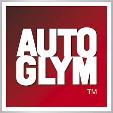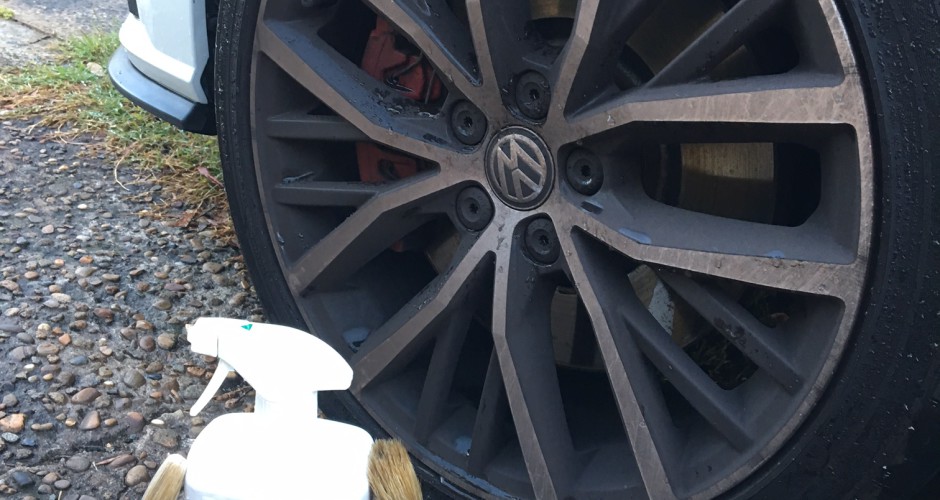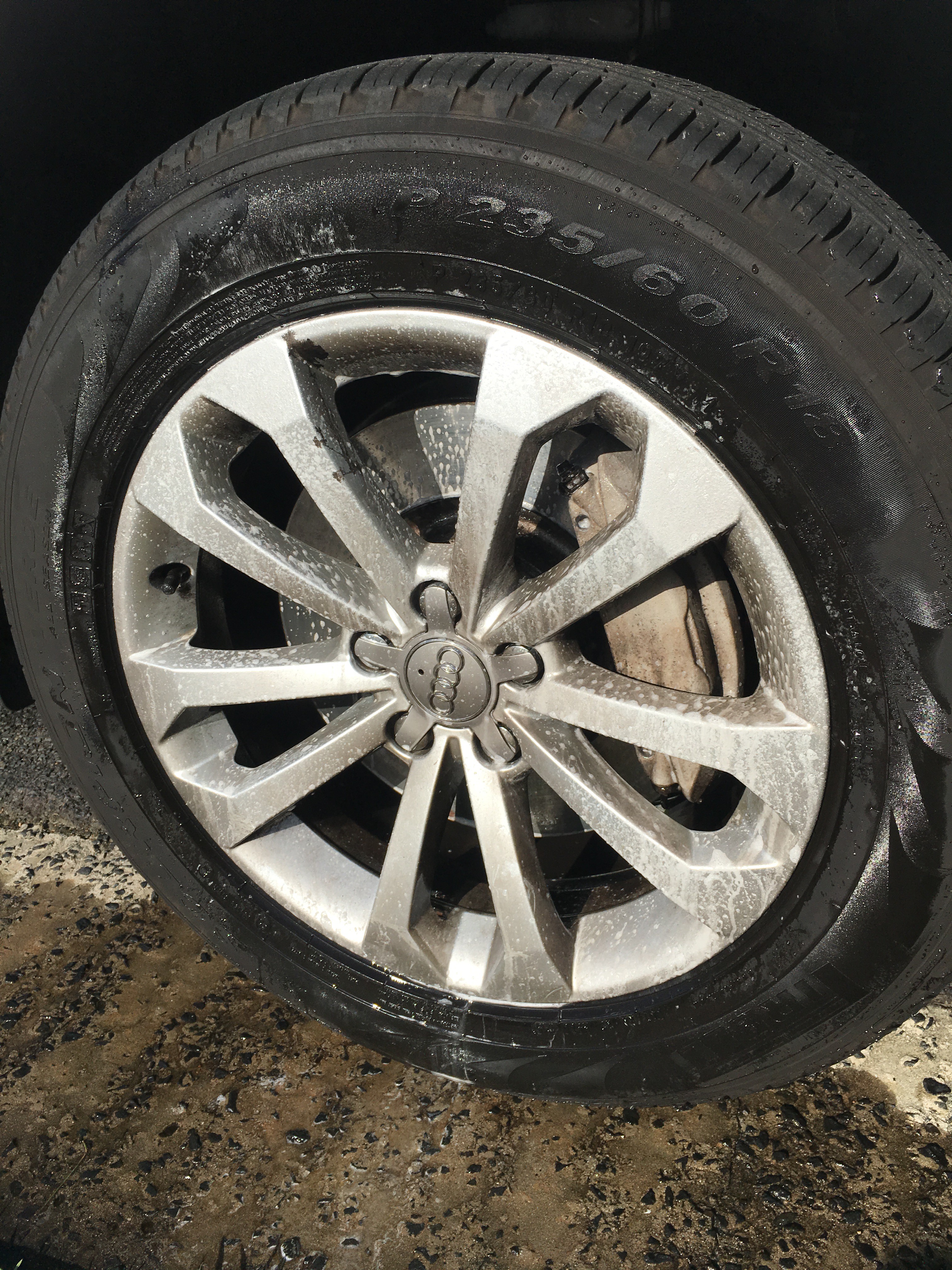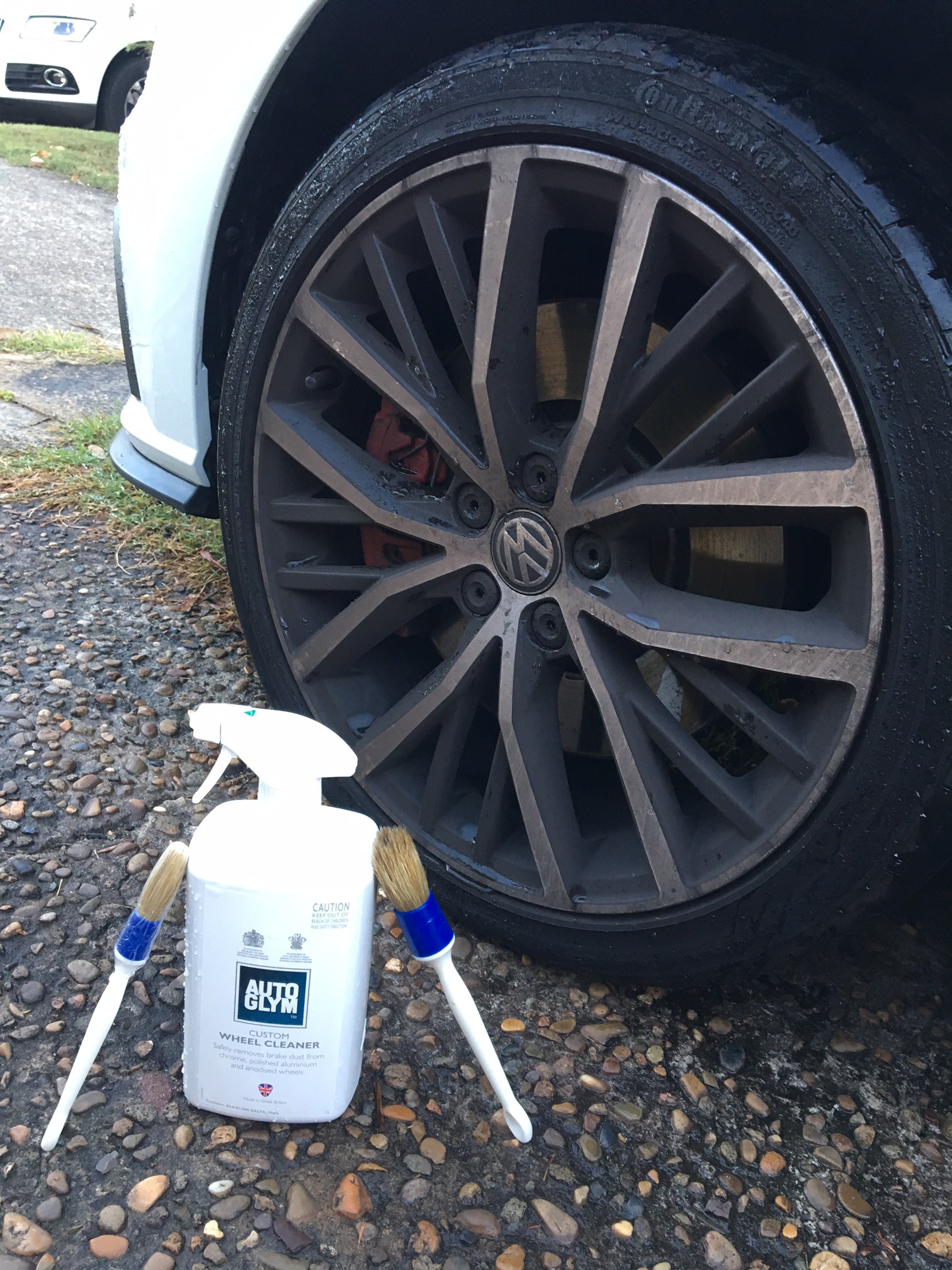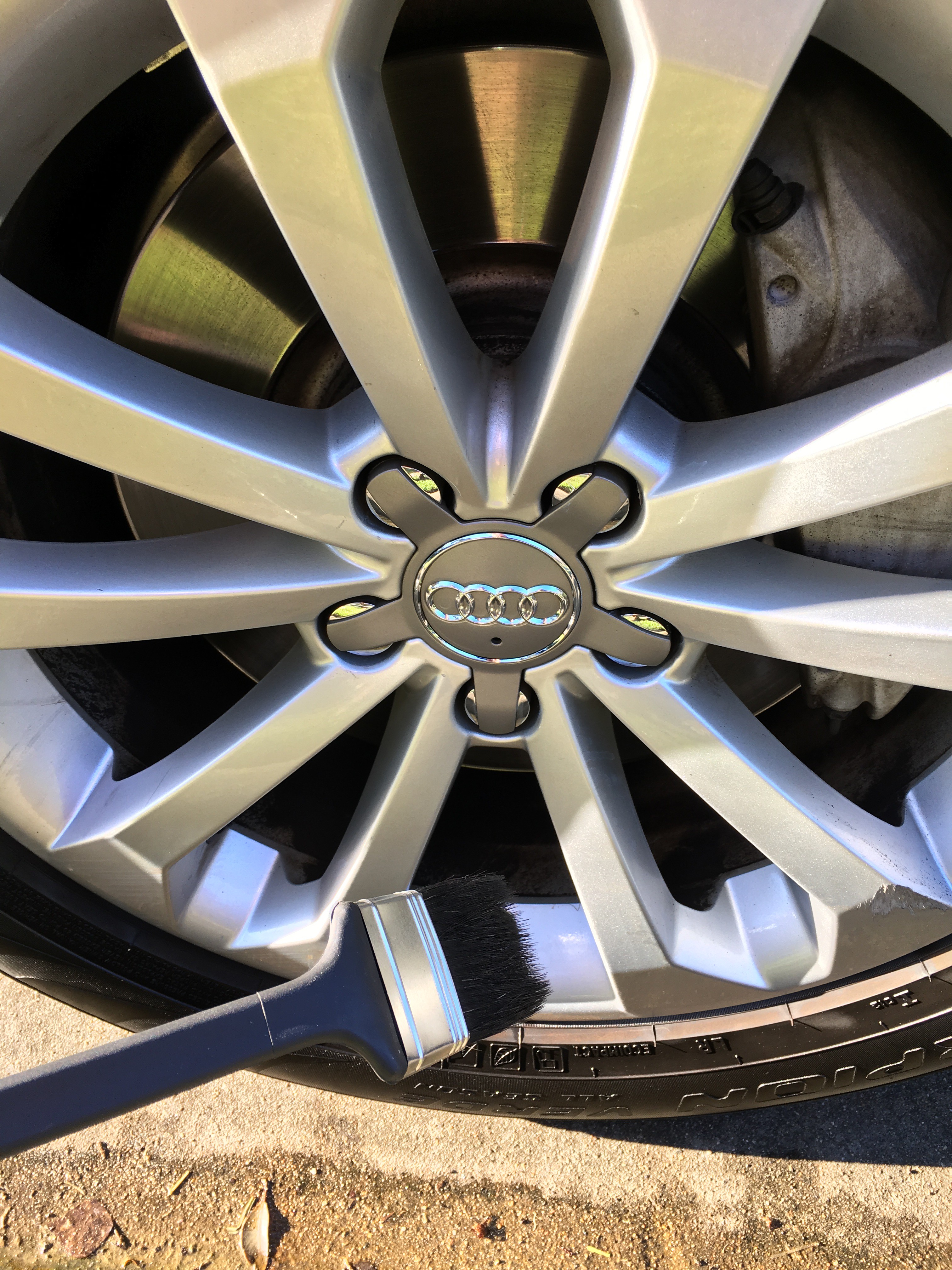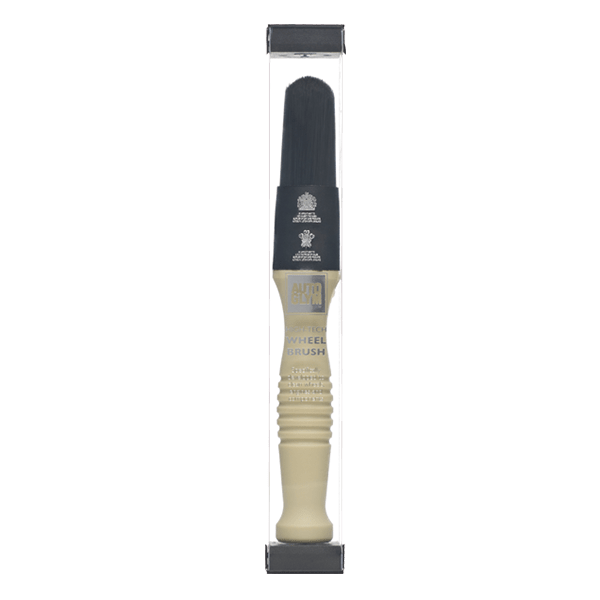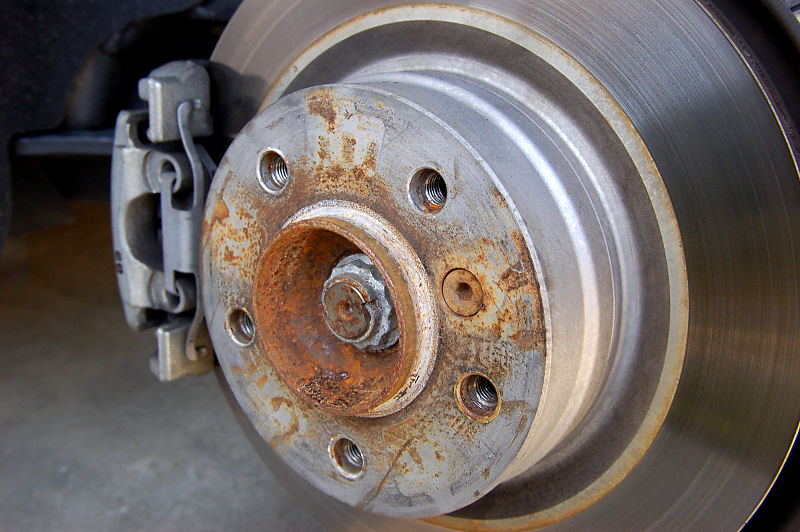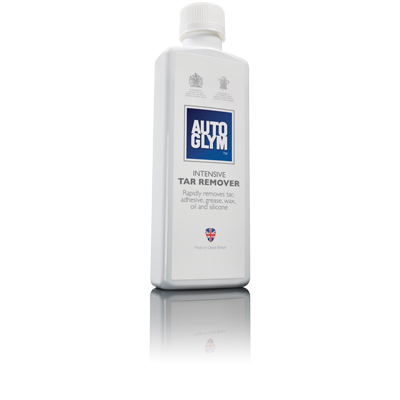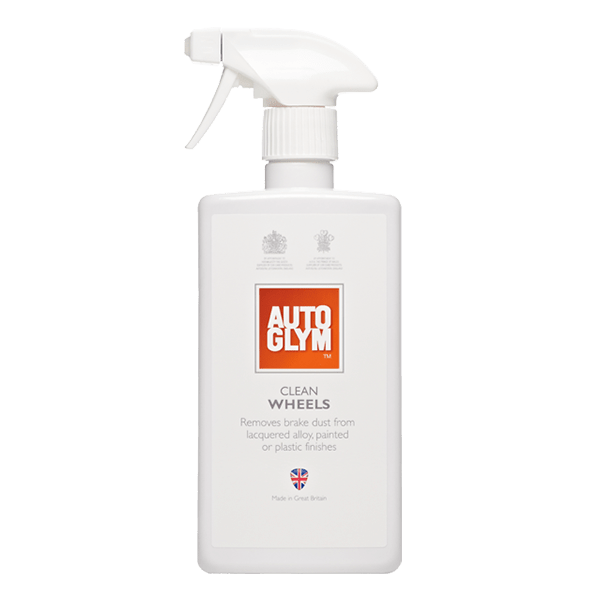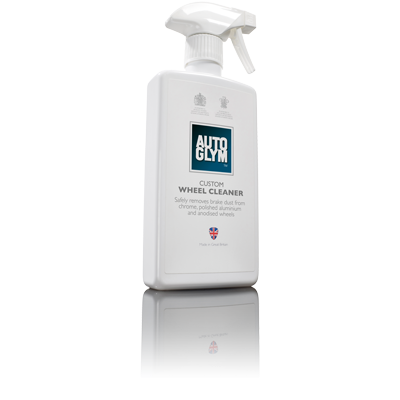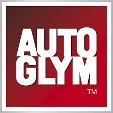Choosing the Correct Wheel Cleaner & Tools
Once you know what your wheels and finish are made from, then selecting the best wheel cleaner and tools to do the job is the next step.
Traditional alloy wheels – those that come as the plain silver looking wheels have been the traditional wheel for many manufacturers. These are relatively tough by nature, have minimal finishes to damage or go wrong and can use acid based wheel cleaners under the correct application. We will go into the wheel cleaners in more detail further on.
For this type of wheel it recommended to go with Autoglym Clean Wheels. This is the Acid based wheel cleaner.
The other type of finished wheels already mentioned in the first article need a different chemistry to help them come clean and protect them longer term. Traditional acid wheel cleaners are far too aggressive for this type of finish. Always play it safe when it comes to wheels as a mistake can cost you dearly. If you have anything that is different to the normal silver alloy wheel then always choose a safe wheel cleaner designed for the specific purpose like Autoglyms Custom Wheel Cleaner. This is the Alkali based wheel cleaner.
Wheel brushes may seem expensive at the time however the ease of use, speed and finish make them a great long term investment. There are many wheel brushes and pads available on the market however one thing to remember is that a brush is designed to agitate the wheel cleaner into the dirt to lift the dirt off. A brush should not be used as the primary method of removing the dirt as this is where wheel surfaces (especially painted and lacquered surfaces) can get scratched.
Never use scouring pads, rough wheel pads and other course materials to clean the wheels. 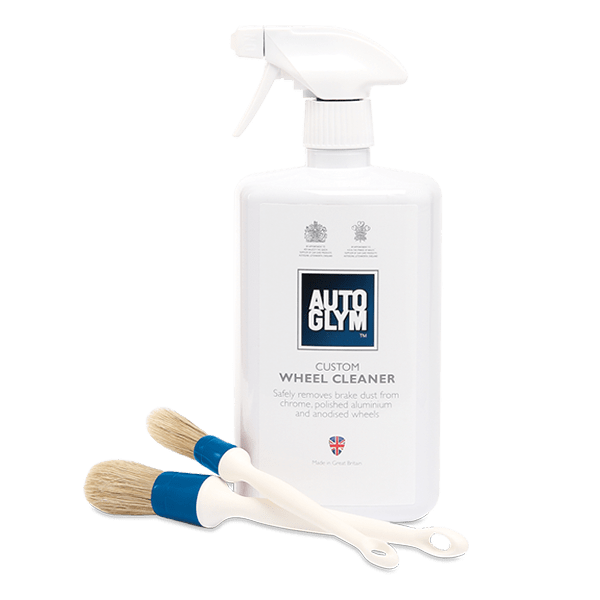
Autoglym has a variety of specially designed soft wheel brushes for the face, spokes and hub of the wheel.
Why we always recommend using specific wheel cleaners.
Some people choose to use other chemicals such as degreasers and soap or even white spirits to clean their wheels. Simple problems faced with this method is that often it’s very hard work and the result is not as good as could be if the right product was used. More severe cases of long term use can lead to wheel and hub corrosion as well as bleaching of paints used on the wheels or brake callipers.
Before You Start
Now, you know what wheel you have, you have the correct wheel cleaner, you have some wheel brushes – what next?
Make sure your wheels are cool to the touch. Many people think that the issue lies in the product drying too quickly on hot wheels. This is true but not for the reason most people think. When spraying any wheel cleaner on a hot wheel what happens is called Flashing. Most wheel cleaners purchased off the retail shelf are ready to use out the bottle and consist of a fine balance of chemicals and water as the carrier. If the wheel cleaner is sprayed onto hot wheels the water essentially evaporates, leaving behind a higher concentration of chemicals than the manufacturer intended to be put onto the wheel. When this happens all prior product testing goes out the window and the results become an unknown.
Autoglym also don’t recommend working in direct sun for this same reason with any product. Some products are not as prone to flashing however something like a wheel cleaner always needs to be treated with caution.
HOW DOES WHEEL CLEANER WORK?
We can’t talk for other wheel cleaners out there as they are all made differently and to different formulations. What we can say is that some wheel cleaners are very effective at stripping contaminants from the wheel however the concentration and aggressive nature of these cleaner can often cause severe corrosion not only to the wheel but the wheel hub as well. There are many cases where a car needs to change a wheel only to find the wheel rusted to the hub.
The first thing a wheel cleaner needs to do is deal with the general dirt on the wheel so ingredients similar to what you find in shampoo loosen the dirt, wrap it up and help to suspend it so it can be rinsed away. You can get a fairly good clean with a shampoo and gentle agitation – but if you do rely on this method you’ll notice over time that black dots (which we identified as usually Iron and Tar) remain and continue to build up. Left untreated they become harder to remove in the future.
So, you need a way of dealing with the black dots. Those tiny bits of metal that have stuck themselves into the lacquer at high temperature and impact speed.
The safest way to remove these little specs is by reducing their size with continuous washing. Acids and Alkalis found in the formulas are used because they can dissolve a little of the particle but don’t tend to attack the lacquer in the correct concentration and application. When the particle is reduced in size it doesn’t stick as well and can be removed by agitation or rinsing.
Wheel Cleaners also work on Tar but Intensive Tar Remover is one of the best products to tackle that job quickly and effectivity. It can be safely applied to wheels as long as the wheel is washed afterwards.
ACID OR ALKALI?
Without revealing the complex formulas of our wheel cleaners, we can say that the traditional Clean Wheels designed for the normal silver alloy wheel is acid based. This formula works hard, fast and cleans quickly however it should always be used and applied correctly and with care as it is acidic. Incorrect use can lead to premature wear on metals, fading on certain finishes and a residue looking coating on dark wheels if not agitated and rinsed correctly. We will go into application in the next article.
Custom Wheel Cleaner is a newer safer formula designed for the multitude of wheel designs and finishes on the market today. This formula is an Alkali based wheel cleaner and requires a little more time and agitation to get the best result, however it’s a lot safer and softer on all wheel types, including those softer finishes or high gloss paints.
However without the correct application either wheel cleaner can be damaging if applied in-correctly. Knowing the correct steps on how to approach your wheels will save you time, money and get you better results.
Next article we look at a step by step process on how to apply the wheel cleaners, clean and rinse and what to look for if you do get it wrong.
